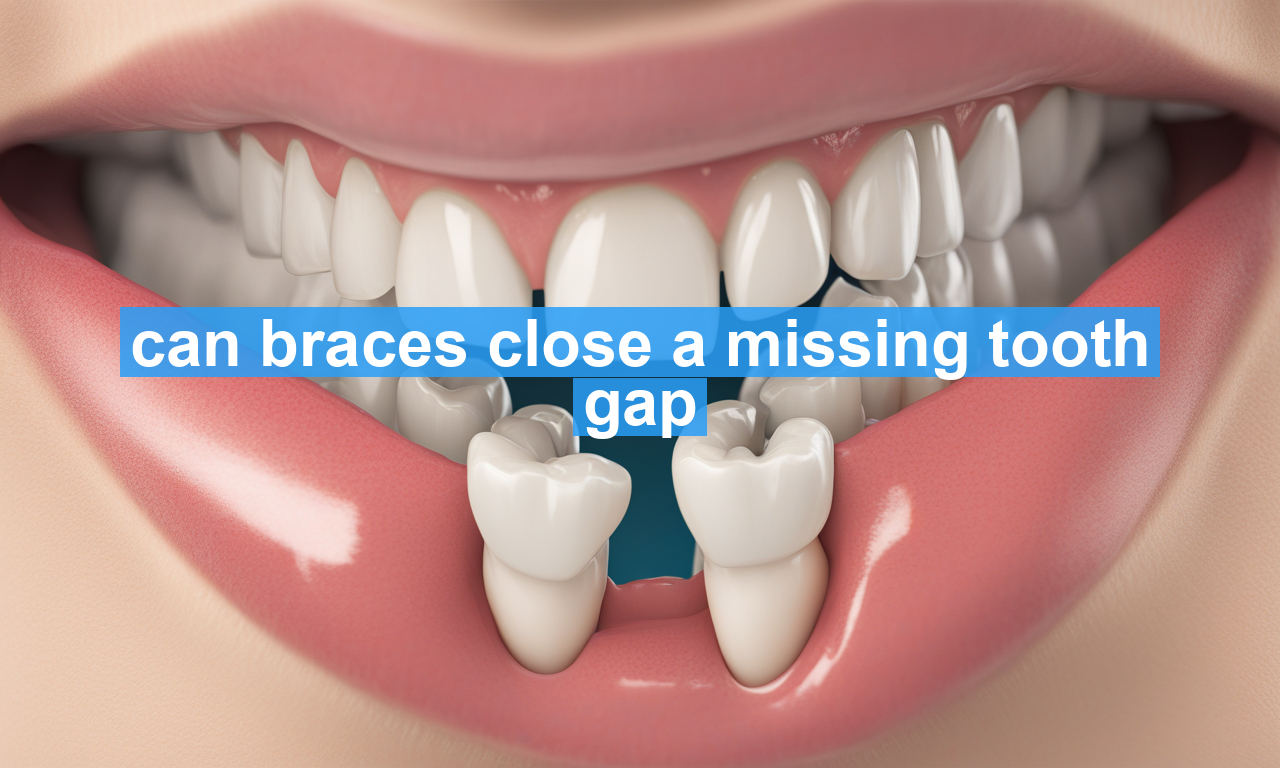Thinking about closing a stubborn gap from a missing tooth and wondering if braces can do the job? You’re not alone. Many individuals navigate the intriguing maze of orthodontics hoping to seamlessly bring teeth together to fill in for a lost neighbor. Beyond just the aesthetic appeal, understanding if those trusty braces can bridge the gap is a journey worth exploring. In this blog post, we’ll delve into whether braces can effectively close a gap left by a missing tooth. You’ll discover the significance of this treatment, and how modern orthodontics offers inventive solutions tailored to individual needs.
Understanding the Role of Braces
Braces have long been the hallmark of a well-aligned smile. Primarily, their role is to correct crooked teeth, fix bite issues, and align the jaws. However, can they really close the gap of a missing tooth? The short answer is: it depends. Often, it’s a tale of mechanics and aesthetics combined with some orthodontic artistry.
Why Gaps Exist
Before diving into how braces might close a gap, it’s central to understand why such spaces exist. Gaps can occur due to:
- Natural tooth loss: Teeth lost to trauma or decay.
- Congenital absence: Born without certain teeth.
- Extraction: Orthodontically or medically necessary removal.
Each scenario requires a unique approach. The missing piece isn’t just about vacant space; it intertwines with the overall structure and balance of your mouth.
Can Braces Close the Gap?
The answer isn’t simply black or white. Braces indeed have potential as a solution, but they are not the sole torchbearer in filling tooth gaps. Here’s what you need to consider:
Feasibility
The feasibility of closing a gap with braces largely depends on the size of the gap and the surrounding teeth’s positions. Smaller gaps have a higher likelihood of being closed effectively. In more complex cases, orthodontists may adopt a combination of treatments.
Alternatives and Combinations
Sometimes, braces are just part of the puzzle. For significant gaps, alternative methods such as dental implants or bridges may be recommended. Dental implants fill the space with hardware that mimics the natural tooth. In some cases, braces can align surrounding teeth in preparation for these permanent solutions.
Aesthetic Considerations
Aligning teeth to close a gap inherently influences facial aesthetics. This means braces need to be strategically employed to keep your smile’s natural balance. Closing a gap shouldn’t throw your bite or facial structure out of whack!
The Importance of Professional Evaluation
No two smiles are the same, which makes a professional assessment crucial. Orthodontists are equipped to evaluate if you’re a good candidate for braces to close a gap. They’ll consider:
- Overall oral health: Ensuring teeth, gums, and jaw are healthy enough for orthodontic work.
- Alignment: Current position of teeth surrounding the gap.
- Expected outcomes: Anticipated results and effect on your smile.
Getting this evaluation ensures that any orthodontic work aligns with your dental health and aesthetic goals. You can find more information on the importance of orthodontic evaluation from sources like the American Association of Orthodontists.
Potential Complications and Considerations
While braces can potentially close gaps, there are complications that might arise. Here’s what you should consider:
Treatment Duration
Moving teeth takes time. When applying braces to close gaps, you must be patient, as this can take anywhere from several months to a few years, depending on the complexity.
Teeth Shifting
Attempting to close a gap without proper planning could result in teeth shifting in undesirable ways, causing alignment problems later. This shifts underscore the importance of a qualified orthodontist managing the treatment.
Innovative Solutions in Modern Orthodontics
Modern orthodontics has expanded the toolkit for closing gaps, offering novel solutions beyond traditional braces. Options such as Invisalign and lingual braces provide subtle and effective alternatives. These methods are less noticeable and can be just as effective under the right circumstances.
When to Consider Implants Instead
If aesthetics, support, and permanence are significant concerns, dental implants might be your answer. Implants involve embedding a titanium screw topped with a crown, effectively simulating a natural tooth both in function and appearance. They offer durability and are viewed as the gold standard in gap closure for missing teeth.
Conclusion
In summary, whether or not braces can fill a missing tooth gap depends largely on the gap’s specific details and dynamics. The interaction between existing teeth, expected outcomes, and available modern orthodontic solutions play vital roles. Consulting with a skilled orthodontist provides the clearest path forward, whether braces, implants, or a combination thereof best serves your needs.
Your smile deserves meticulous care and planning, so don’t hesitate to seek professional advice to unlock the best solution for you. Whether it’s braces that triumph or other dental innovations that shine, ensuring comprehensive care is key to achieving the smile you’ve always desired.

